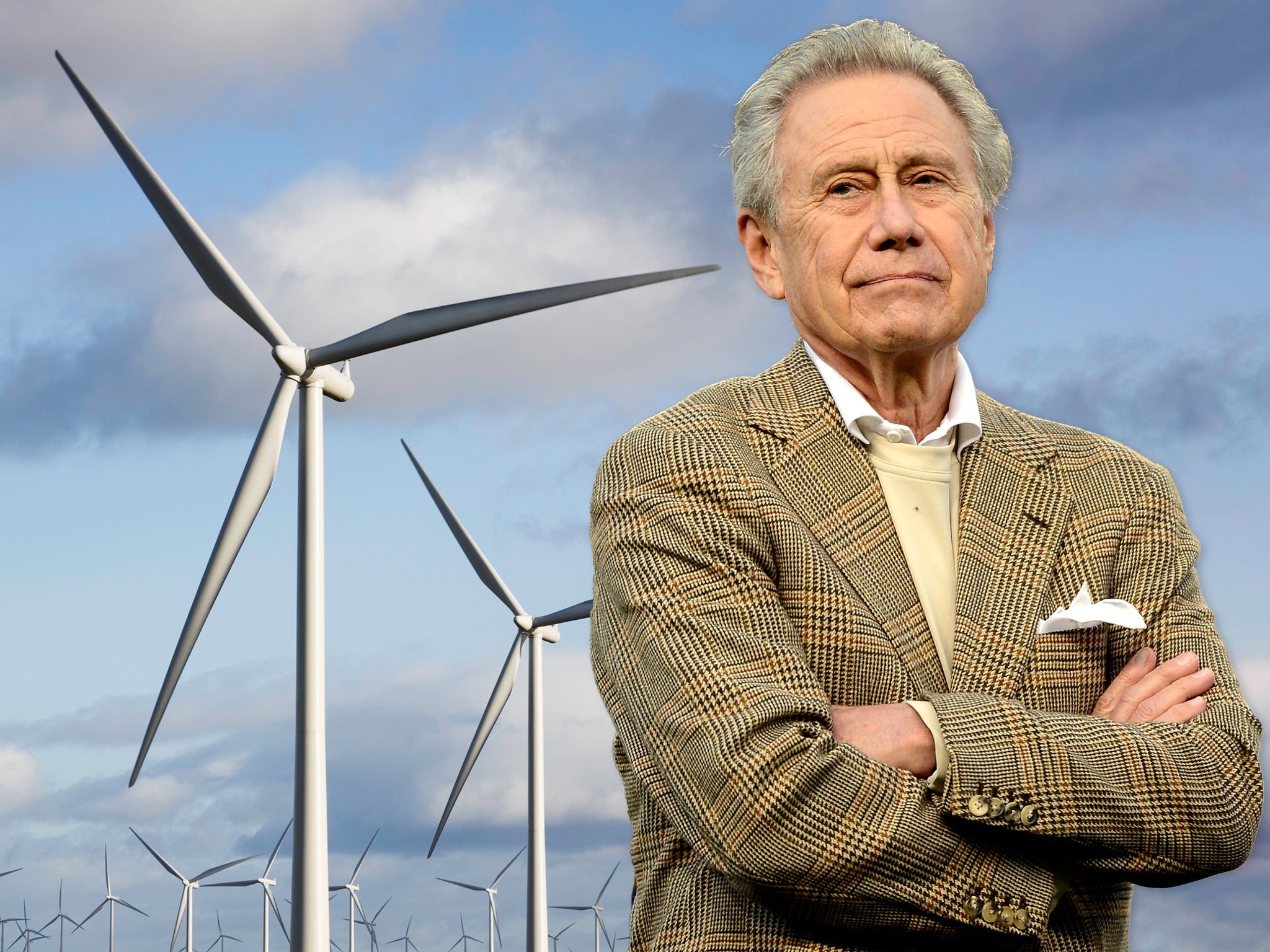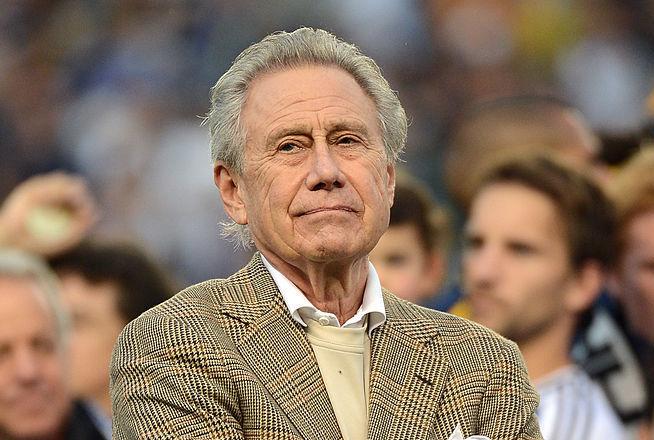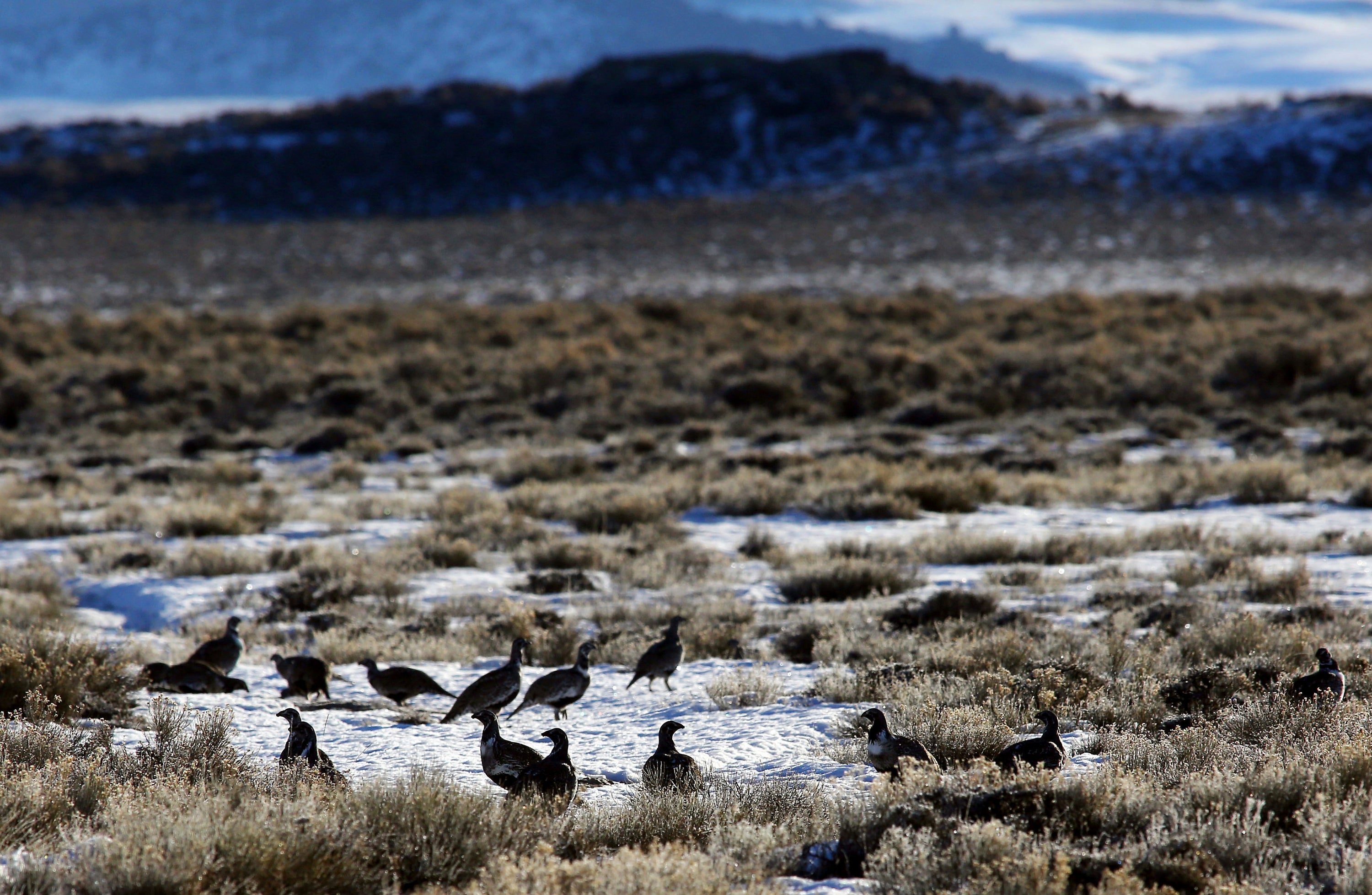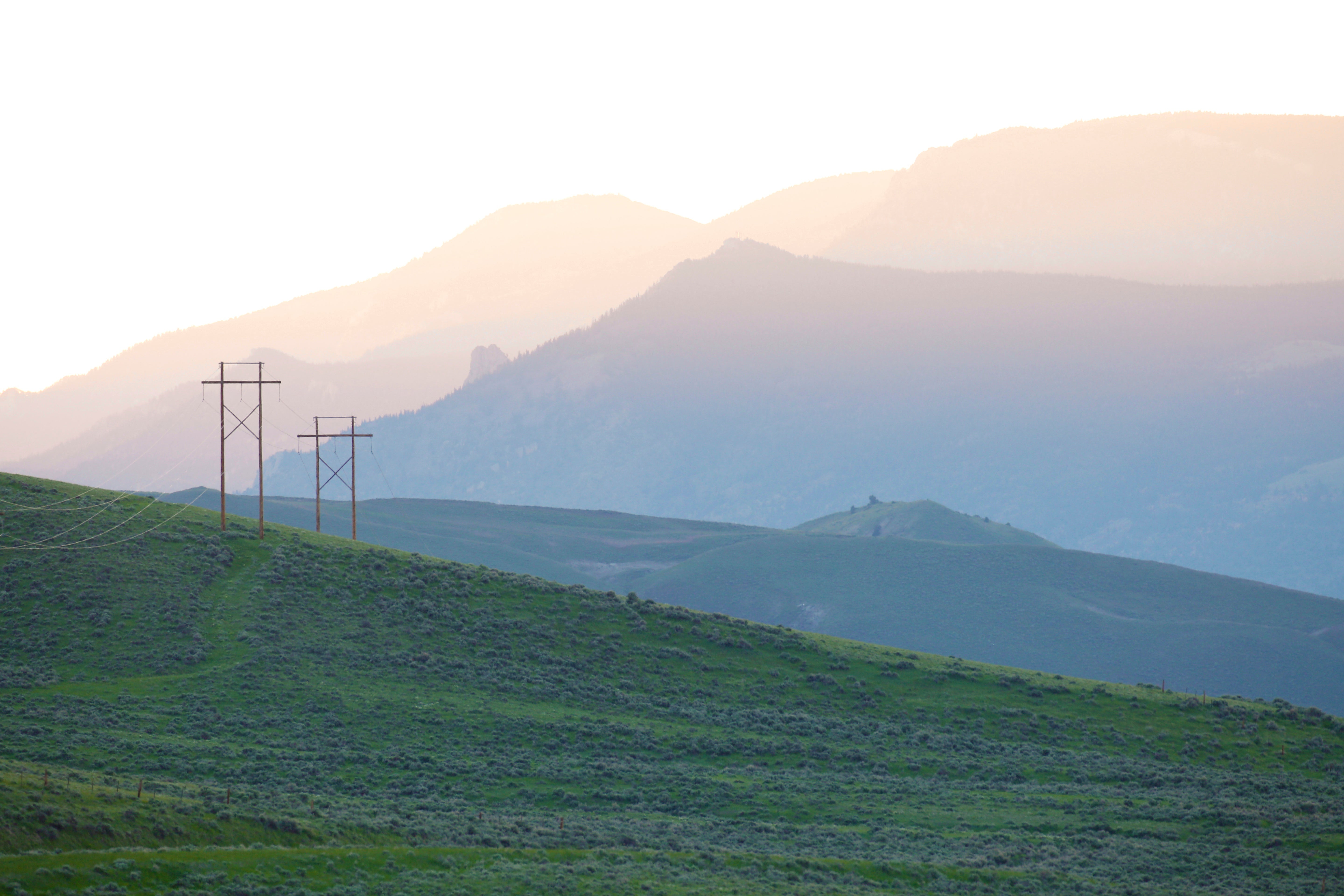Saving the planet or making a buck? Why is a fossil fuel tycoon building America’s biggest wind farm
Project could provide energy for one million people but at what cost, writes Andrew Buncombe


Work has started on what would be the nation’s biggest wind farm – a $3bn project backed by a fossil fuel tycoon that could deliver clean energy to more than one million customers.
Yet even as workers start clearing patches of ranchland on a remote site in the American West for 3,000 turbines and a power transmission line that will travel more than 700 miles to California, the project continues to attract controversy.
Some allege the massive, utility-scale project, that could purportedly lead to the reduction of 11 million tonnes of CO2 emissions every year, will destroy critical habitat for species such as sage grouse and golden eagles.
Others question the motives of 82-year-old Philip Anschutz , whose $11bn fortune came in part from exploiting fossil fuels, and who has long backed conservative causes.
Others say regardless of Anschutz’s motives, the project could be provide vitally-needed clean energy at scale, and could persuade others to invest in the kinds of large projects that environmentalists, along with Joe Biden, say are crucial to combat the climate crisis.
“The [project contains] infrastructure necessary to reliably and cost-effectively generate over 3,000 megawatts of clean, sustainable electricity,” says the website of the Power Company of Wyoming, an affiliate of The Anschutz Corporation.
“It is situated on land that has some of the best winds in the state and in the country. The project area has Class 6 and 7 winds, which are the highest wind classes.”
Anschutz has been trying to build the project, known as TransWest Express, since 2008, and has spent millions of dollars to prepare the land on his 320,000 acre ranch in Wyoming, half of which he owns, and half of which he rents from the government.

The money has been spent on lobbying, on overcoming challenges from environmentalists and even paying the family of the late developer Ronald Boeddeker, long-time owner of the Cross Mountain Ranch, and whose strident opposition to it had held up its progression.
Getting to this point has been a long, slow process spread over more than 15 years. Wyoming regulators initially designated the area as “core habitat” for safe grouse, and it was not until 2014 that Anschutz received state approval.
Federal regulators initially approved the plan in 2012, and it received a green light for the first phase to proceed on 18 January 2017, two days before President Barack Obama left office.
“As part of President Obama’s Climate Action Plan to reduce carbon pollution, create jobs, and move our economy toward clean energy, the Bureau of Land Management (BLM) today announced the approval of the first 500 wind turbines for the Chokecherry Sierra Madre (CCSM) Wind Energy Project,” the BLM said.
The latest plan is for the transmission line to head southwest from the Chokecherry and Sierra Madre ranch site near Rawlins, Wyoming, where it would run alongside a separate project backed by billionaire investor Warren Buffett.
Buffett’s project, known as Gateway South, will also pass through the Cross Mountain Ranch, and it also required agreeing a deal between Buffett’s PacifiCorp and Boeddeker’s family.
Both would represent the kind of large-scale green energy production that experts say the US – and the world – needs to rapidly transition to so as to try and avoid the very worst impacts of the climate crisis.
A widely-read 2020 report by Princeton University that investigated ways that America could achieve a big enough net zero energy infrastructure, suggested “five distinct technological pathways” to achieve one by 2050.
Among the five is a “high electrification” or E+ scenario, which involves aggressively electrifying buildings and transportation, so that 100 per cent of cars are electric by 2050. It would require a 10 per cent year-to-year increase in current solar and wind energy.
“With multiple plausible and affordable pathways available, the societal conversation can now turn from ‘if’ to ‘how’ and focus on the choices the nation and its myriad stakeholders wish to make to shape the transition to net-zero,” John Holdren, former science adviser to President Obama and a Research Professor at Harvard University, writes in the report’s foreword.

Yet some activists allege the damage that Anchutz’s plan will do the environment is so vast, it outweighs the benefits, and that he ought to move to a different, less environmentally harmful location.
“The project is a massive wind farm that’s going to generate a lot of renewable energy, but it’s going to be an environmental disaster,” Erik Molvar, executive director of the Western Watersheds Project, tells The Independent.
Molvar, whose non-profit group monitors much of the West, claims the project will wipe out sage grouse over hundreds of thousands of acres, and lead to the localised extinction of golden eagles.
He says the eagles are vulnerable to the turbines’ blades, and fly into them because they cannot see them. Given Anchutz’s project is one of many in the region, it will “do in their populations”, he says.
Molvar says Anchutz could have selected an alternative siting for his project, using arable land that had much lesser ecological impact. He claims Anchutz pushed ahead with the project, and acted with the “megalomania of a billionaire that doesn’t have enough humility to behave responsibly in society”.
He also claims that by opting for a large scale utility-scale project, rather than a more grassroots venture that would put solar panels over rooftops and over canals, the new green energy pioneers are ignoring the lessons of the fossil fuel industry.
Randi Spivak is another environmentalist who argues that renewable energy can be produced without destroying critical habitats. She says one report suggested that covering 4,000 miles of irrigation canals with solar panels would not only generate a sixth of California’s energy needs, but hugely reduce water evaporation.
“There are so many ways that we could be making this transition smartly and efficiently, without destroying public lands. And imperiled species habitat is not the way to go,” says Spivak, public lands programme director at the Center for Biological Diversity.
She says both the state of Wyoming and the federal authorities had previously listed the land Anchutz is using as critical habitat but then de-designated it because of lobbying pressure from the billionaire. “The Feds could have said no. He needed the federal land, not just his private ranch land. The Feds rolled over from political pressure,” she adds.

Most environmentalists appear to agree as to the importance of the habitat that is at the centre of the debate. They agree that more can always be done to try and repair damage that is done, either by only using certain turbines at particular times of year, or else make up for loss of species.
Garry George, a senior official with the National Audubon Society, one of the oldest of its kind in the nation and with a focus on conservation of birds and their habitats, says creating clean energy and combatting the climate crisis is also crucial to the longterm future of birds, and other flora and fauna.
A 2019 report by the group titled, Survival By Degrees, found two-thirds or 389 out of 604 of North American bird species are at risk of extinction from climate change.
George says Audubon supports the rapid shift to clean energy “but we think it needs to be sited and operated properly, to avoid, minimise and mitigate effectively for the impacts on birds”.
He says the Anchutz project was required to get a permit from the United States Fish and Wildlife Service in which it agreed to replace any golden eagles lost. It also changed the design of the project to avoid some areas important to feeding eagles.
Has the project paid attention to concerns of environmentalists?
“Well, it took some convincing, but yes, they did become quite mindful of our concern and the concerns of other conservation groups,” he says. The project also incorporates a monitoring system.
George is sceptical that the US can achieve the kind of major green energy production as laid out by the Princeton study without major “utility scale projects”.
“Those are important. You can’t do it all on our rooftops,” he says.
Another person who says the Anchutz project has listened to concerns of local people is Crystal C’ Bearing, Director of the Northern Arapaho Tribal Historic Preservation Office.
She says members of the indigenous community have worked with the project to identity important sites that can be protected and preserved before any harm is done.
“That is not always how it is,” she says. ‘Often times people will come to us when the project at the end….This has been pretty positive.”
Anchutz, whose company has owned a succession of media outlets and sports team across the nation, also owns the Coachella Valley Music and Arts Festival.
Despite this, he has long been personally identified with conservative causes, be it supporting Seattle’s anti-evolution Discovery Institute or backing groups opposing LGBT+ rights. (In 2018, when there was controversy over his alleged views, he denied any such bigotry, saying: “I support the rights of all people and oppose discrimination and intolerance against the LGBTQ community.”)

He is also famous for maintaining a low-profile and avoiding the media. One report by Forbes suggested he had only had a single formal press conference for any of his businesses and that was in the 1980s.
On the wind farm project he has also said very little, and given vast parts of his wealth were derived from the extraction of fossil fuels, many assume his main motivation in the wind farm project is to make money.
“It’s a big investment, billions of dollars, and it’s a potential payoff, as well,” says the Audobon’s Garry George,
In a rare interview to promote a book to which he contributed, Out Where the West Begins: Profiles, Visions, and Strategies of Early Western Business Leaders, Anchutz said when deciding who to write about, he did not consider “whether or not they would be good role models”.
“I picked them because of their abilities to create positive change, and long term strategies for industries or businesses that would survive and and change the American West,” he told Colorado-based broadcaster Aaron Harber.
One of the subjects was Charles Goodnight, a Texas rancher, while another was Theodore Judah, one of the pioneers of the transcontinental rail line.
Anschutz heads the Anschutz Foundation and donated large sums to various causes. He and his wife gave $100m for a new campus for the University of Colorado School of Medicine in Aurora.
In his interview he claimed many of those he profiled did not, in his opinion, get sufficient recognition for what they achieved.
He told Harber: “In doing the work on the book, I was very pleasantly surprised to find how many of them actually were good role models. And they did give back. There was that spirit of reinvestment.”
At one point, Anschutz decries the death of the Los Angeles street car system that existed for some 70 years from, 1895 to 1963, until it was replaced by road and cars.
The interviewer suggested it could cost $100bn to build such a system today.
“The practical answer is you can’t do it because you can’t get a public project built anywhere today,” he said.
Why not?
“Because no one wants it in their backyard. There’s too many people, there’s too many activists that will campaign against you. You can’t hardly get something done. You couldn’t build a railroad for this country today.”
He says back when his heroes of the West were pushing ahead, “one of the things that allowed it to happen is government interference and involvement was an all time low”.
Anschutz is the founder-owner of the Anschutz Entertainment Group, the world’s largest owner of sports teams and sports events, and the second-largest presenter of live music and entertainment events, including Coachella.
He does not appear to have spoken in public of his wind farm project.
In response to questions from The Independent, spokesperson Kara Choquette, director of communication for TransWest, said the Bureau of Land Management (BLM) was tasked by Congress with “managing public lands for a variety of uses such as energy development, livestock grazing, recreation, and timber harvesting while ensuring natural, cultural, and historic resources are maintained for present and future use”.
“To do this, we manage public lands to maximise opportunities for commercial, recreational, and conservation activities. This promotes healthy and productive public lands that create jobs in local communities while supporting traditional land uses such as responsible energy development, timber harvesting, grazing, and recreation, including hunting and fishing.”
She said the project had passed “comprehensive federal environmental analysis and review”.
But what is driving Anschutz? Does he now consider himself an environmentalist? What does he say about his previous exploitation of fossil fuels, that helped create the planet-warming emissions the wind farm would not? Is he a megalomaniac, or does he see himself as one of his cherished early pioneers of the West, determined to get things done.
His company did not respond to questions on these topics.
In a 2019 interview with Forbes, he was asked if he was doing the project greenwash his reputation?
“No,” he replied. “We’re doing it to make money.”
Join our commenting forum
Join thought-provoking conversations, follow other Independent readers and see their replies
Comments